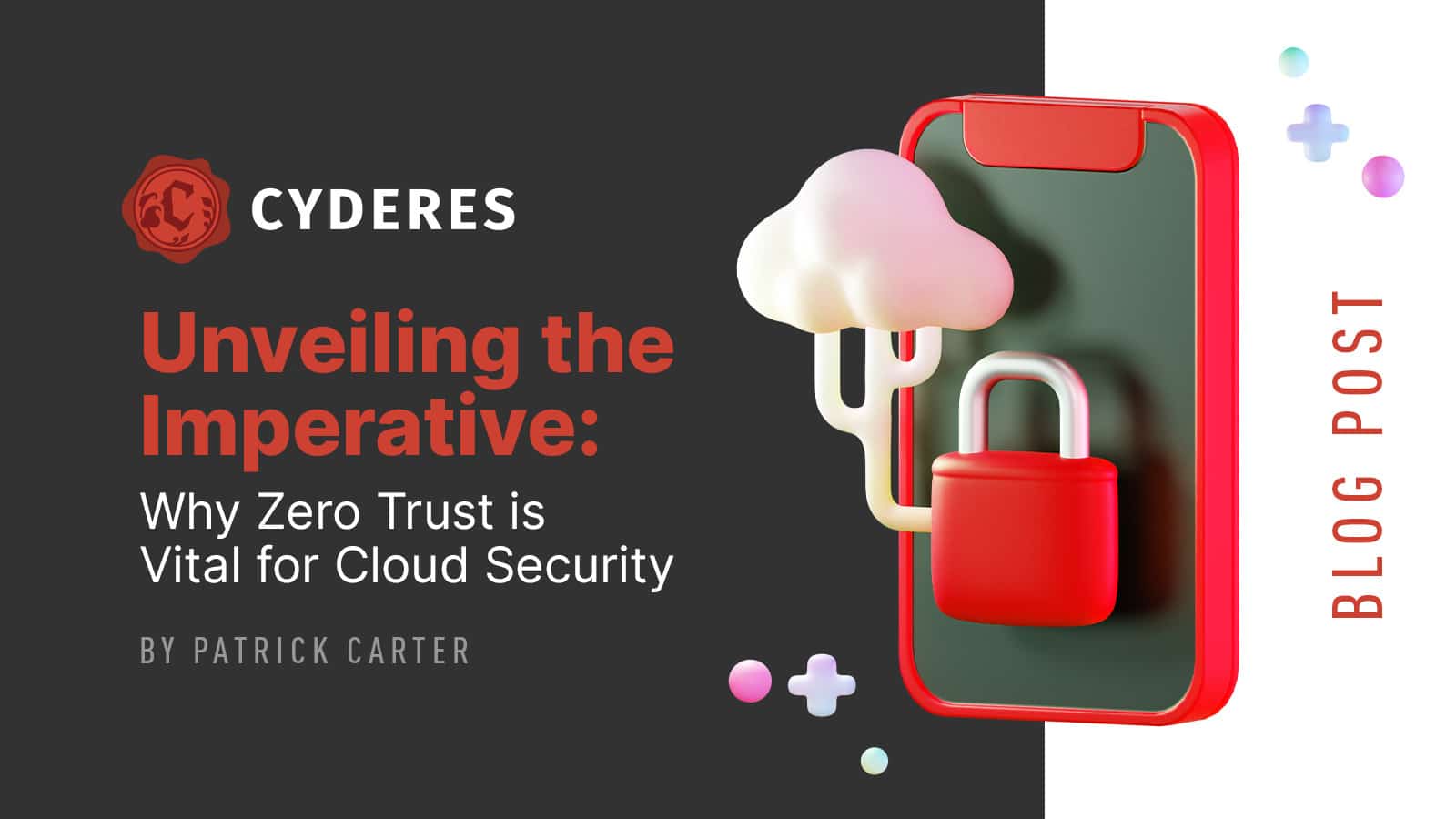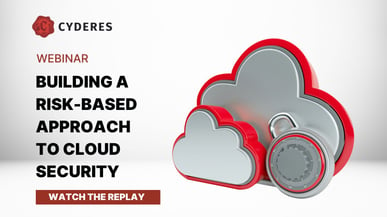Article contributed by Patrick Carter , Practice Director for Cloud Security at Cyderes
In an era where data breaches and cyberattacks continue to dominate headlines, the importance of robust security measures has never been more evident. As organizations increasingly migrate their data and operations to the cloud, a paradigm shift in security strategy is essential. Enter Zero Trust – a groundbreaking security concept that has emerged as the cornerstone of cloud security. This article will explore why Zero Trust is crucial for safeguarding cloud environments.
The Cloud Security Challenge
Adopting cloud computing has brought about unprecedented flexibility, scalability, and cost-efficiency for businesses; however, this migration to the cloud has also opened new avenues for cyber threats. The traditional security perimeter model — protecting the network perimeter — must be revised. Security must adapt to this dynamic landscape with data residing in remote data centers and users accessing resources from anywhere.
What Is Zero Trust?
Zero Trust is not just a technology but a holistic security approach that fundamentally shifts the security paradigm. The core tenet of Zero Trust is simple: “Never trust, always verify.” In essence, Zero Trust means that security teams should not inherently trust anyone or anything, regardless of whether they are inside or outside the network.
The fundamental principles of Zero Trust include:
- Continuous Verification: Every access request is verified, regardless of the user’s location or device. This principle includes strong multi-factor authentication (MFA) and device health checks.
- Least Privilege Access: Security teams grant users and systems only the minimum access required to perform their tasks, reducing the attack surface and potential damage in case of a breach.
- Micro-Segmentation: Networks are divided into small, isolated segments with access controls enforced between them, preventing lateral movement by attackers.
- Data-Centric Security: Zero Trust prioritizes data protection, ensuring data is encrypted, classified, and rigorously access-controlled.
Why Zero Trust for Cloud Security?
1. Perimeter-less Environments
Cloud environments are inherently perimeter-less. Traditional security models that rely on securing the network perimeter are ineffective when data and applications are dispersed across multiple cloud providers and accessed from anywhere. Zero Trust, which focuses on continuous verification, addresses this challenge by securing access at the individual request level.
2. Evolving Threat Landscape
Cyber threats are constantly evolving, becoming more sophisticated and persistent. Zero Trust’s continuous monitoring and verification principle helps organizations stay one step ahead of these threats by detecting and responding to anomalies and breaches in real time.
3. Remote Workforce
The rise of remote work has blurred the lines between corporate networks and the public internet. With employees accessing cloud resources from various locations and devices, Zero Trust ensures access is granted based on user identity and device trustworthiness, not just network location.
4. Data Protection
In cloud environments, data is the crown jewel. Zero Trust places data protection at its core, ensuring that even if a breach occurs, sensitive data remains encrypted and inaccessible to unauthorized parties.
5. Compliance and Regulations
Many industries are subject to strict data protection regulations. Zero Trust helps organizations meet these compliance requirements by enforcing stringent access controls, monitoring activities, and maintaining an audit trail.
Implementing Zero Trust in Cloud Environments
To implement Zero Trust in cloud security, organizations should consider the following:
- Identity and Access Management (IAM): Implement strong authentication methods and access controls based on user identity.
- Continuous Monitoring: Utilize threat detection and response tools to monitor activities and identify anomalies.
- Least Privilege Access: Grant minimal access permissions to users and systems based on their roles and responsibilities.
- Data Encryption: Encrypt data at rest and in transit and classify data based on sensitivity.
- Micro-Segmentation: Implement network segmentation to control lateral movement within cloud environments.
Conclusion
As organizations continue their digital transformation journey by embracing cloud technologies, Zero Trust emerges as the bedrock of cloud security. The principles of continuous verification, least privilege access, and data-centric security align perfectly with cloud environments’ dynamic and distributed nature. Embracing Zero Trust is not merely an option; it’s necessary to protect sensitive data, mitigate risks, and ensure the security of cloud-based operations in an ever-evolving threat landscape. Zero Trust isn’t just a buzzword; it’s the future of cloud security.
Take the first step in transforming your cloud security program
Schedule a time to connect with our team of leading experts for an assessment of your cloud security architecture.
For more cybersecurity tips, follow Cyderes on LinkedIn and Twitter.



